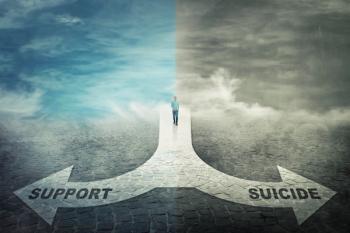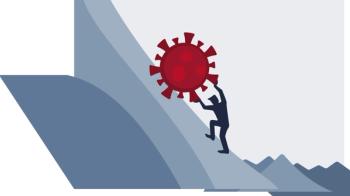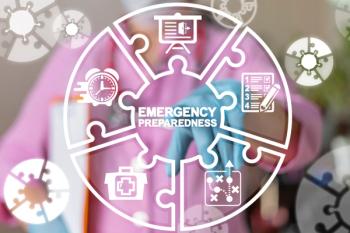
Dear Mental Health Innovators: The COVID-19 Honeymoon Is Almost Over
Society’s psychological reactions to a crisis can be predicted according to disaster response frameworks, which can be used to understand what to build during the evolving COVID-19 crisis, and when those innovations will prove most vital.
Society’s psychological reactions to a crisis can be predicted according to disaster response frameworks. Mental health innovators can use these frameworks to understand what to build during the evolving
A predictable disaster
While the occurrence of disasters is largely unpredictable, the human emotional response to disasters is relatively predictable. Researchers have mapped the phases of emotional
Crisis, however, does not have to be an inhibitor of innovation, but can be an invitation for innovation. Historically speaking, crisis is often followed by a creative resurgence of the human spirit that guides changes in technological and social innovation, like the
While facing the reality of the COVID-19 pandemic, we can anticipate far-reaching consequences that will affect our financial system in the immediate future and bring about massive changes to the way our world functions on every level. This global pause-the “quarantine”- as a self-imposed reset button has the opportunity to usher in a heightened awareness of our individual priorities, and a burst of alternative technological solutions that are likely to persist beyond the viral pandemic, such as how schools and education function, or how health care is administered.
In light of the COVID-19 crisis, we can use this historical precedent-now conveniently captured by emotional response disaster frameworks-to guide our path forward. Not only can these frameworks be used to understand how and when our world will be psychologically affected by this disaster, but they can help inform what is needed during each phase to best support mental, emotional, and spiritual well-being. Mental health innovators must come to view their work through a public health lens, not only considering what is immediately needed, but what needs will arise once the “honeymoon” phase of this crisis is over.
The view today
Over the course of March 2020, our world traversed the heroic phase of the disaster response. This phase is characterized by high levels of activity, low levels of productivity, and a surge in altruistic, adrenaline-induced rescue behavior (think: health care providers valiantly working without personal protective equipment).2 During this phase, the mental health innovation trend was that of open-access innovations. A multitude of companies, from meditation apps to teleconferencing technologies, offered free or discounted access to their platforms in this time of limited resources and millions out of work. Examples of this include therapy app Talkspace, which now offers free therapy for health care workers and discounted subscriptions for the public, and the meditation app Headspace, which now offers free meditation recordings for all.
• Phase: Heroic - March 2020
• Characteristics: High activity, high altruism, low productivity
• Innovation trend: Open-access
Throughout April 2020, we entered the honeymoon phase (
• Phase: Honeymoon - April 2020
• Characteristics: High assistance, high bonding, high optimism
• Innovation trend: Platform
The current view
However, as we move deeper into May 2020 we seem to be nearing a less hospitable phase-the disillusionment phase (
Disillusionment is the longest of the phases-the depth of which will largely dictate how quickly and easily we will recover-which is why it will need to be characterized by a mental health innovation trend of prevention innovation. These technologies must focus on the prevention or mitigation of mental health issues like depression,
• Phase: Disillusionment (including post-crisis crash) - May 2020 - ?
• Characteristics: Low optimism, high distress, high illness
• Innovation trend: Prevention
Reconstruction
Although we cannot say for certain how long the disillusionment phase will last-the range is from months to years, especially with the looming financial crisis-we will eventually emerge into the calmer waters of the reconstruction phase.2 During this phase, individuals feel a sense of recovery, responsibility, and capacity for rebuilding-there is a greater acceptance of and adjustment to the new normal. With the new normal must come novel solutions, which is why mental health innovation will need to be characterized by frontier innovations, novel technologies based on significant scientific advances, and engineering innovation. Examples of frontier technologies include innovations like AI, sensors, -omics, imaging, synthetic biology, smart devices, digital therapeutics, and the like. While this is not to suggest that frontier technologies should not be built throughout the crisis, it’s also useful for mental health innovators to consider what tools are most crucial and when they are most needed. For instance, frontier technologies may not be readily adopted during the disillusionment phase if they are too costly or complex to use during a time of great uncertainty.
• Phase: Reconstruction - timing unknown
• Characteristics: Return to recovery and responsibility
• Innovation trend: Frontier
Although these stages of response to disasters are true for the population at large, patients with serious mental illness are more vulnerable to profound levels of depression, anxiety, and distress, and may not reach recovery without additional help from practitioners.
Looking toward the future
The COVID-19 pandemic is forcing us to face the reality that our world has shifted-climate change, natural disasters, and pandemics are part of our new normal. What seemed stable is now uncertain, our hope in the government’s ability to manage all disasters is diminishing, and we are turning to each other and to our neighbors for solutions. The phrase “we are in this together” rings true for us and has left us to ask: What can each of us do to contribute to the solution and solvency of our society and the planet
To guide innovation at every level, we should anticipate the spiritual and psychological needs of the population at large, as well as those of the most vulnerable patients. Maintaining hope, focusing on well-being, and rebalancing the stress response, as well as improving infrastructure for mental health care can help reduce burnout in the health care workforce and improve the lives of all individuals. We encourage you to consider the following questions with us:
1. How can we inspire, encourage, and retrain those who have been cast aside as “non-essential” in this time? If retraining 20 million people can be quickly achieved, what scalable technological or vocational training can be offered immediately?
2. In an increasingly non-religious world, what scalable spiritual alternatives can be offered to provide individuals with answers to existential questions like meaning, purpose, destiny, control, and role of the self at this time?
3. How can we cultivate resilience to ensure society of its capacity to rebuild and redesign our collective new normal?4
4. How can we train individuals to live simpler lives with enhanced self-reliance, and how can technological innovation help?
Armed with the knowledge of the human emotional response to disaster, we can anticipate and potentially bypass psychological lows by preparing humanity to be more flexible, proactively deal with disasters, and honor their own strength and ability to fight adversity. Mental health innovators will represent a group of humble, perhaps unsung heroes in this crisis, and it’s through collaboration, urgency, optimism, and trust that we will get through this together.5,6 It’s time for us to get to work-to help, heal, and harness the innovative potential inherent in crisis.
Disclosures:
Ms Carson is Director of Innovation at at a major mental health organization, Expert in Residence at Georgetown University, and author of Wired This Way; Dr Eyre is Brain Health Venture Executive and Innovation Diplomat, Instructor in Entrepreneurship at the Global Brain Health Institute (UCSF and Trinity College Dublin), Advisor to Brainstorm Lab for Mental Health Innovation, Stanford University, Honorary Fellow with IMPACT, Deakin University, Australia; Dr Lavretsky is Professor of Psychiatry, Department of Psychiatry, University of California Los Angeles. We’d like to hear from you, you can email Jessica Carson (jessica@jessicacarson.co), Harris Eyre (harris.eyre@gmail.com), or Helen Lavretsky (hlavrets@ucla.edu) with questions, comments, or if you’d like more information on mental health innovation ideas. The authors report no conflicts on interest concerning the subject matter of this article.
References:
1. DeWolfe DJ. Training manual for mental health and human service workers in major disasters. US Department of Health and Human Services. Substance Abuse and Mental Health Services Administration, Center for Mental Health Services; 2000.
2. Washington E.
3. López-Ibor Jr JJ. Disasters and mental health: new challenges for the psychiatric profession. World J Biol Psychiatry. 2006;7:171-182.
4. Laird KT, Krause B, Funes C, Lavretsky H. Psychobiological factors of resilience and depression in late life. Translat Psychiatry. 2019;9:1-18.
5. Smith E, Au R, Mossé M, et al. Rebooting late-life mental health innovation and entrepreneurship with convergence science. Am J Geriat Psychiatry. 2020; In press.
6. Ternes K, Iyengar V, Lavretsky H, et al. Brain health Innovation Diplomacy: a model binding diverse disciplines to manage the promise and perils of technological innovation. Int Psychogeriat. February 2020; Epub ahead of print.
Additional Reading
1. Staglin G.
2. Van Hoof E.
3. Collins F.
Newsletter
Receive trusted psychiatric news, expert analysis, and clinical insights — subscribe today to support your practice and your patients.













